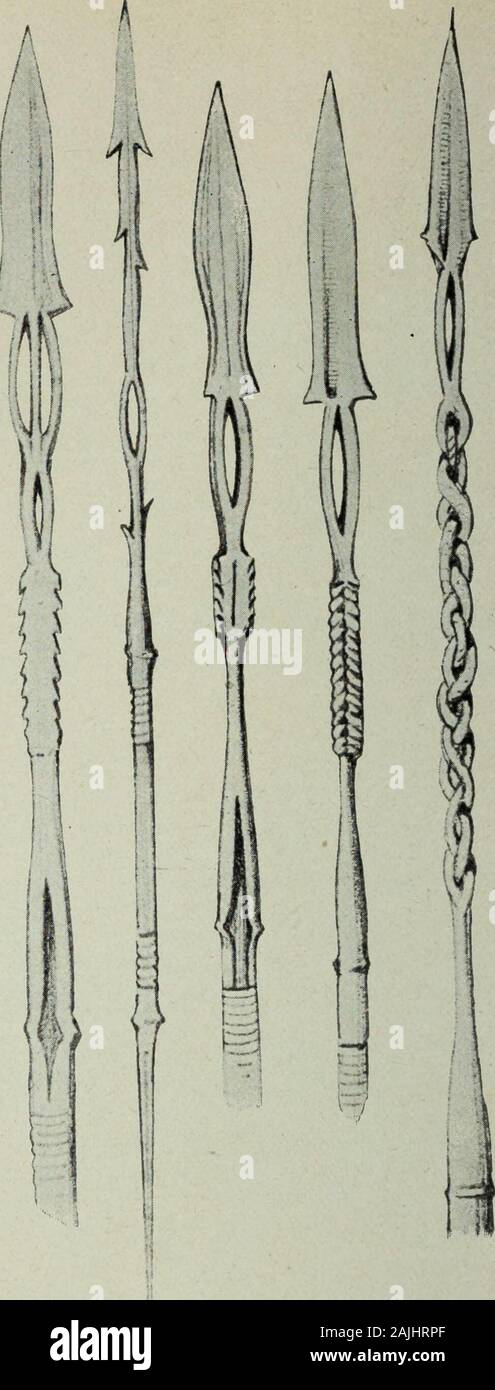From the Congo to the Niger and the Nile : an account of The German Central African expedition of 1910-1911 . 0> o CO c (A) 4r! M. K l: 176. Yakoma spears. SULTANATES OF BANGASSU AND RAFAI 209 Asande district. The dangerous character of thisanimal exists, of course, only in the imagination ofthe natives. The banks of the river are very sparsely inhabitedduring the rainy season on account of the floods, whichoblige the people to build their huts further inland.The bushes growing on the banks are moreover in-fested by dangerous flies, amongst which I observedthe common tsetse, as well as th

Image details
Contributor:
The Reading Room / Alamy Stock PhotoImage ID:
2AJHRPFFile size:
7.1 MB (306.9 KB Compressed download)Releases:
Model - no | Property - noDo I need a release?Dimensions:
976 x 2560 px | 8.3 x 21.7 cm | 3.3 x 8.5 inches | 300dpiMore information:
This image is a public domain image, which means either that copyright has expired in the image or the copyright holder has waived their copyright. Alamy charges you a fee for access to the high resolution copy of the image.
This image could have imperfections as it’s either historical or reportage.
From the Congo to the Niger and the Nile : an account of The German Central African expedition of 1910-1911 . 0> o CO c (A) 4r! M. K l: 176. Yakoma spears. SULTANATES OF BANGASSU AND RAFAI 209 Asande district. The dangerous character of thisanimal exists, of course, only in the imagination ofthe natives. The banks of the river are very sparsely inhabitedduring the rainy season on account of the floods, whichoblige the people to build their huts further inland.The bushes growing on the banks are moreover in-fested by dangerous flies, amongst which I observedthe common tsetse, as well as the sleeping-sicknessmosquito. At Ganapia I was obliged to changeboats as well as boatmen, as the rapids of Gufuruare not navigable. Within a short distance of Gana-pia the Mbomu divides into two parts which reunitefive hours further up. The island of Gufuru whichis thus formed is, according to the natives, the homeof a small kind of tuskless elephant. These dwarfelephants are said to inhabit the marshes and woodsof the island, and consequently to be difficult to find.They cannot be the result of in-breeding, for duringthe dry se